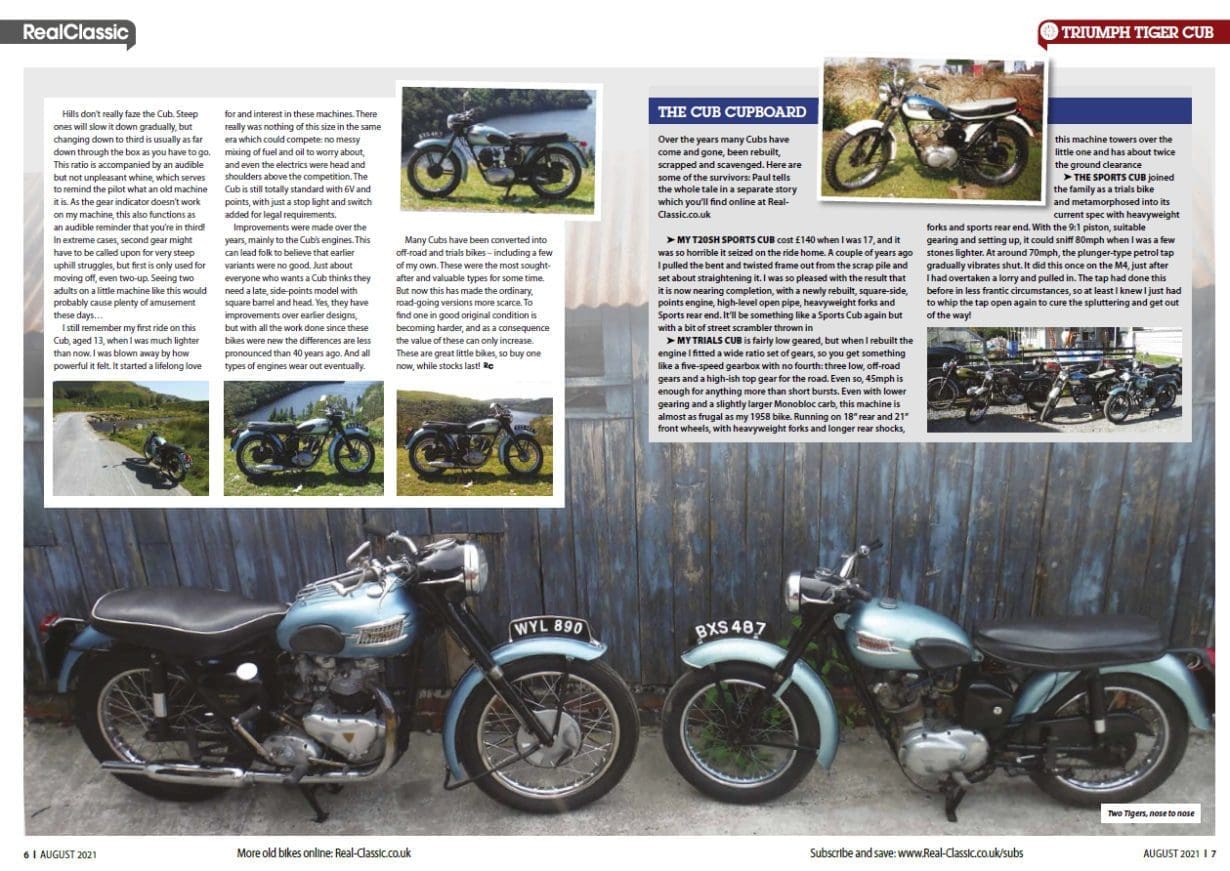Edward Turner’s cobby Cub has been a firm favourite with classic fans since the early 1950s – and the mighty mite is regularly featured in depth in the monthly magazine. Here are some of the highlights, should you be tempted to bid on a T20 right now…
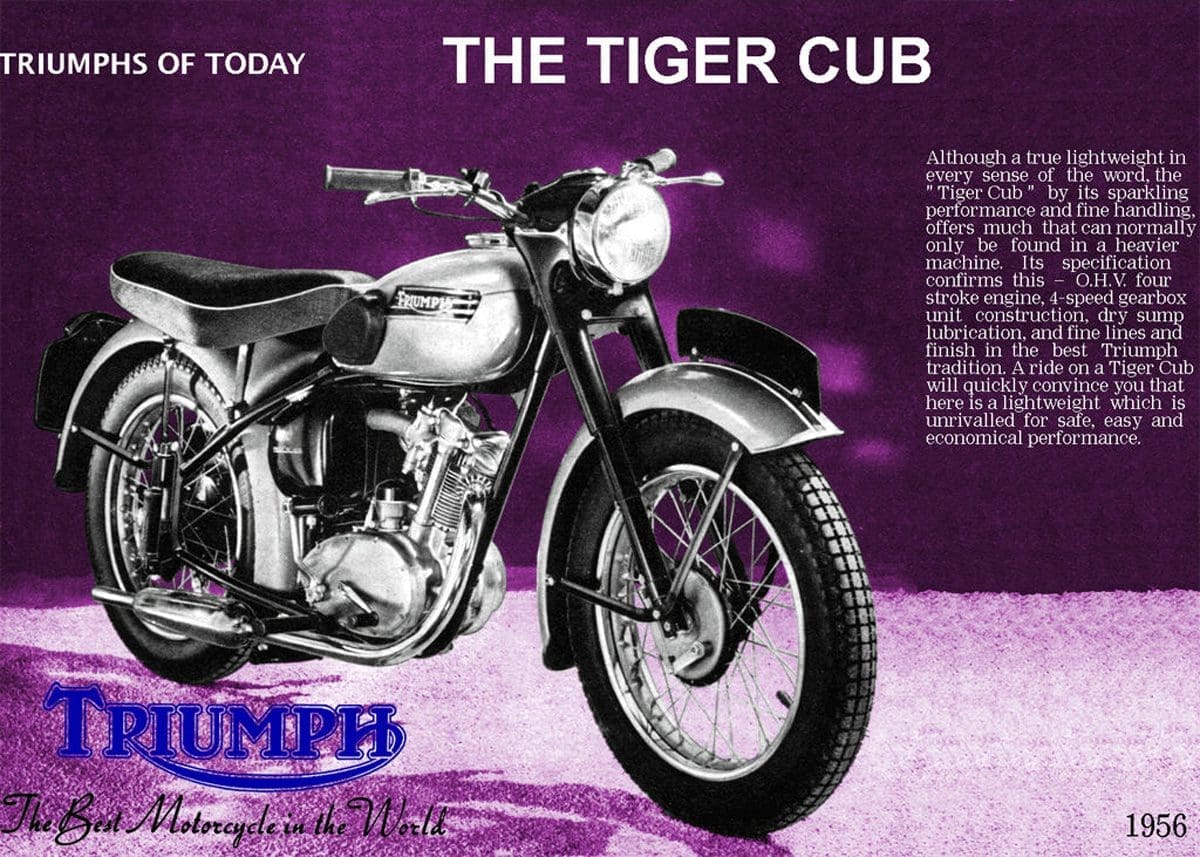
Triumph’s first production sprung frame plunged (ahem) into existence when the T15 Terrier was let off the leash at Earl’s Court in November 1952. Capable of 70mph (downhill) and 105mpg, it looked just like a proper Triumph, only smaller. The T20 arrived in 1954, bored and stroked to 63mm by 64mm to give 199cc. It cost £127 and could exceed 75mph but was still good for over 100mpg on average. The T20 used the same gearbox ratios as the T15 with a larger gearbox sprocket. In its first year of production, 1974 cubs were built. Around 63% were sold to the home market while 17% went to the USA.
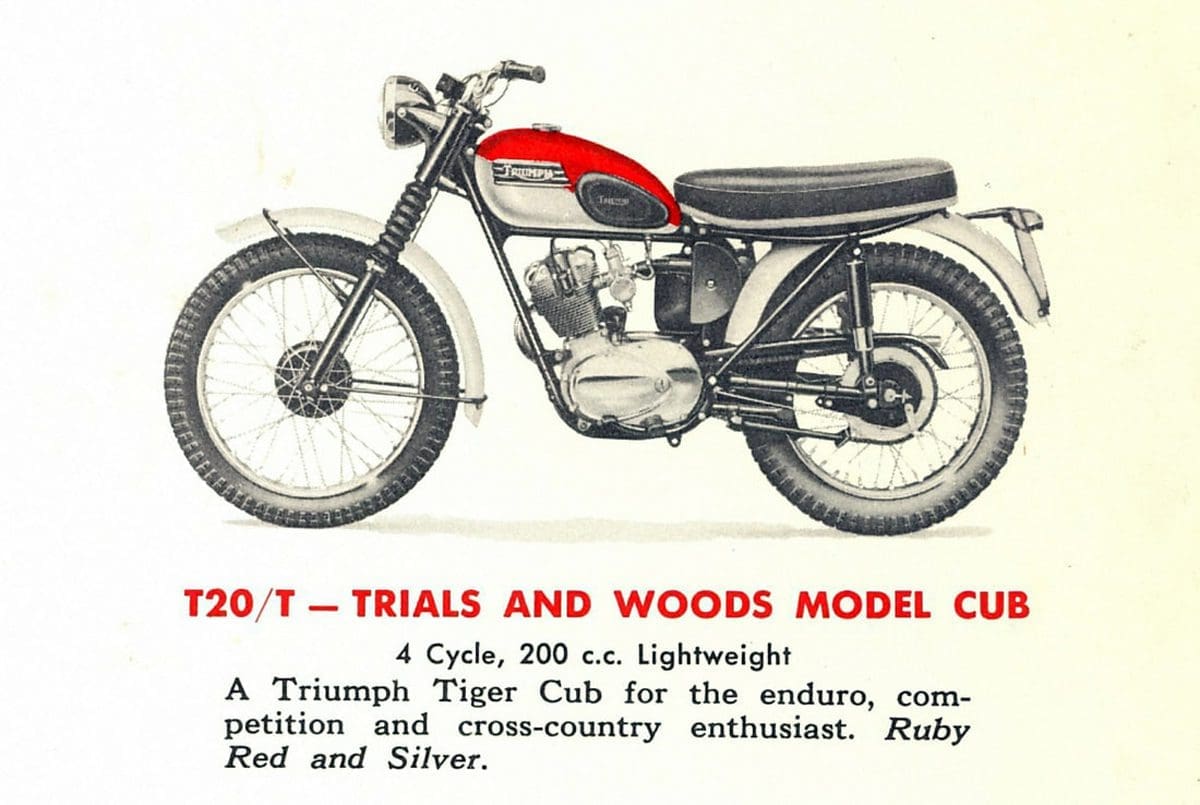
Early cubs used an Amal 332 carb which was replaced by a Zenith in 1958; now hard to service and fairly awful when it was new, anyway. Production reverted to an Amal Type 32 in late 1961. Initially the crankshaft could be removed without taking the engine out of the frame, via the drive side, but this was changed for a more conventional split crankcase arrangement. Engine improvements include a better oil pump (1961); that new bottom end (1962) and the side-points arrangement from late 1962. Early engines with plain big end bearings need regular oil changes, and make sure the engine’s fully warm before revving hard. Adjusting the points on pre-side-points machines can be a faff!
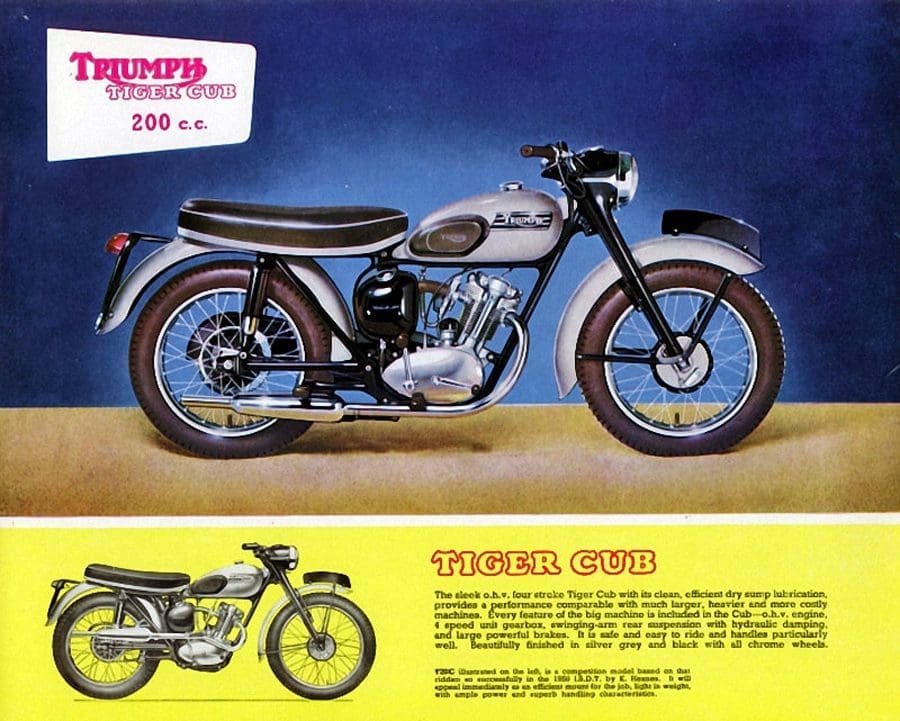
19” wheels only appeared on the base model for 1954/55, and 16” wheels were used from 1956. They went to 17” in 1960 on the standard bikes, while C/CA competition and S scrambles models were specified with 18” and 19” items. Other Cub variants include the J-Junior, a US-market machine restricted to 5bhp; the W-Woods which was intended for reliability trials and such; the T-Trials off-roader; an American SS street scrambler; the SH sports home (market) sports roadster with 9:1 compression, sports cam and close-ratio gears; SM and M mountain cubs; WD machines for the French army, and the Bantam and Super cubs which put The triumph engine in a BSA chassis.
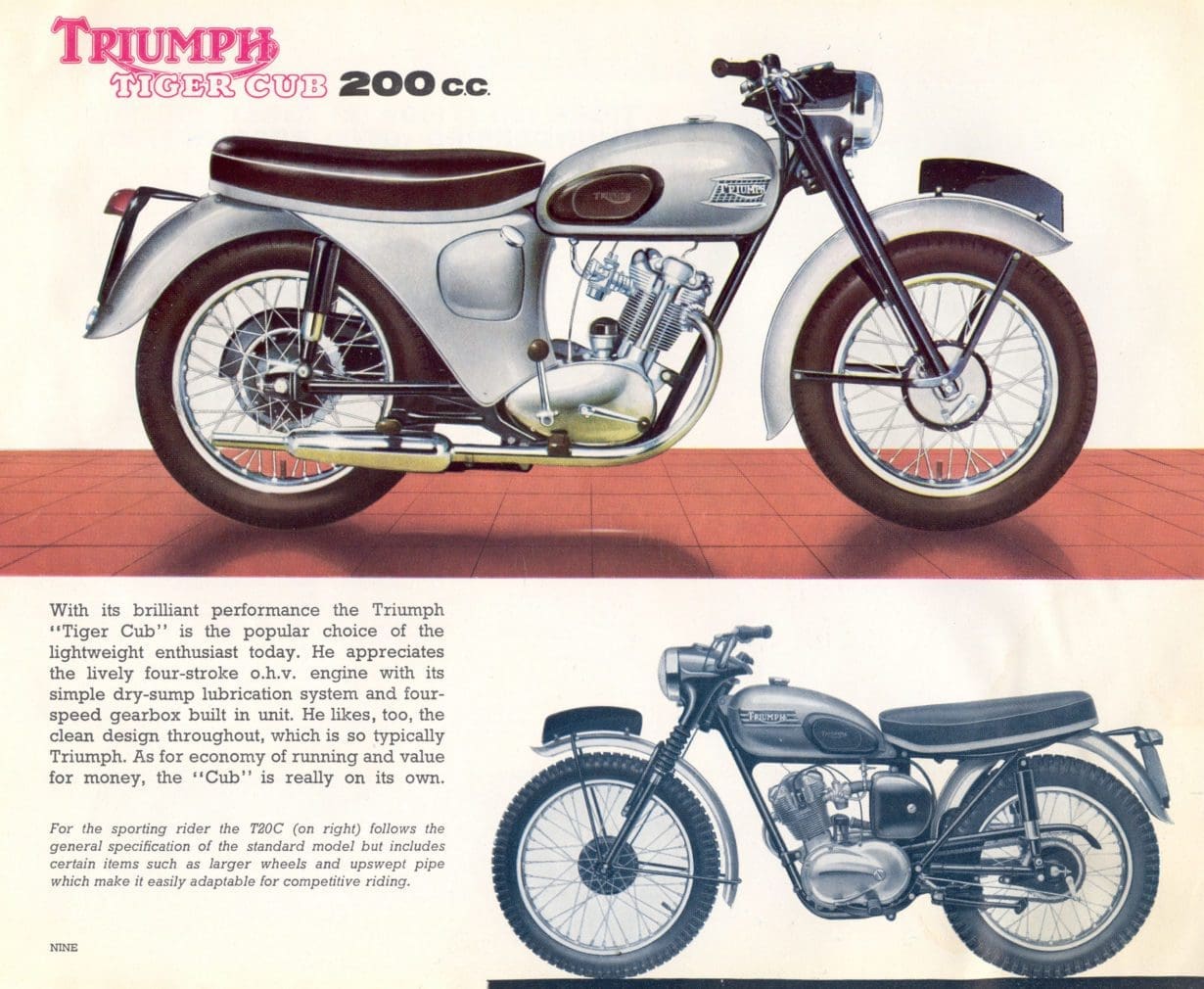
Like the Terrier, the T20 initially featured plunger rear suspension (which appreciates being greased every thousand miles or so), and tele forks (also initially filled with grease, not oil). The swinging arm frame arrived for 1957; early Cubs with the ‘swan neck’ frame use the petrol tank for structural support (so beware later tanks fitted to early bikes which can compromise frame integrity).
Bikini bodywork was fitted behind the engine and beneath the saddle from 1959 on the standard T20, but not the very many offshoots. The final cubs were T20B Super Cub or Bantam Cubs with Wipac electrics from 1967. Around 4180 of these types were made between 1966 and 1969, with about 55% being sold in the UK. Total Cub production exceeded 112,000.
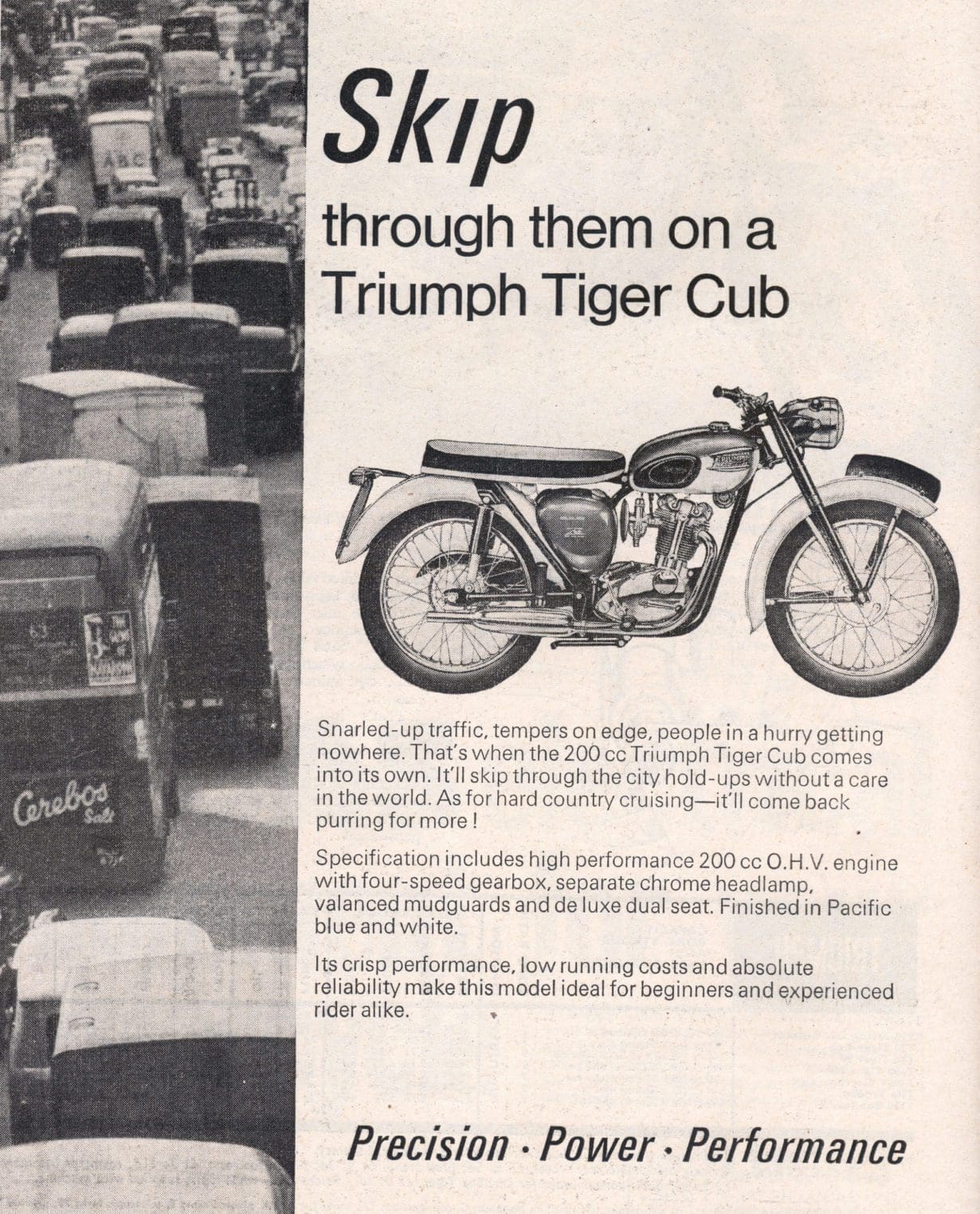
And if that has whetted your appetite then there’s lots more to read about T20s in the magazine, available mail order or instantly as a digital issue. You’ll find full-length features in RC220 and RC208 for starters!
